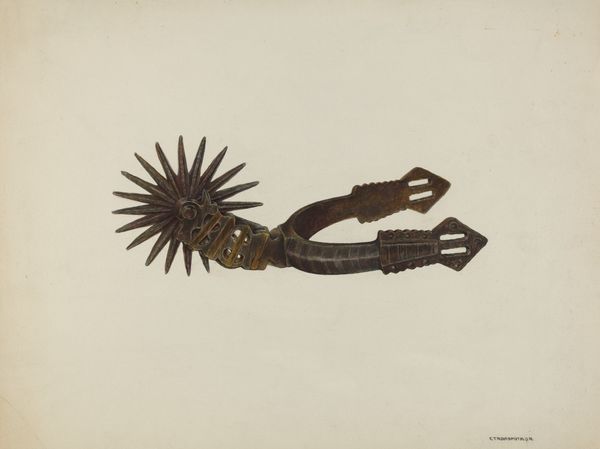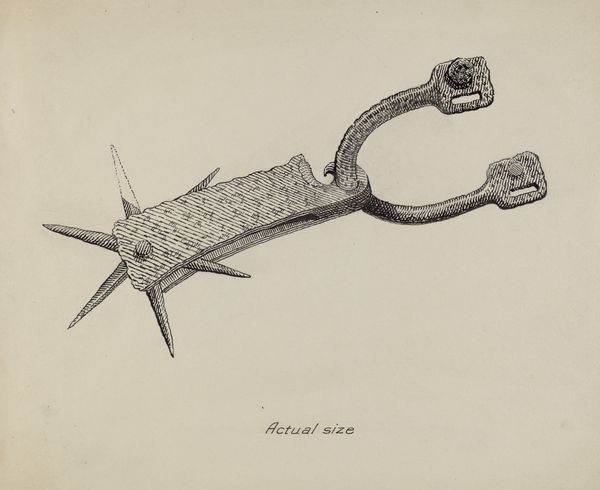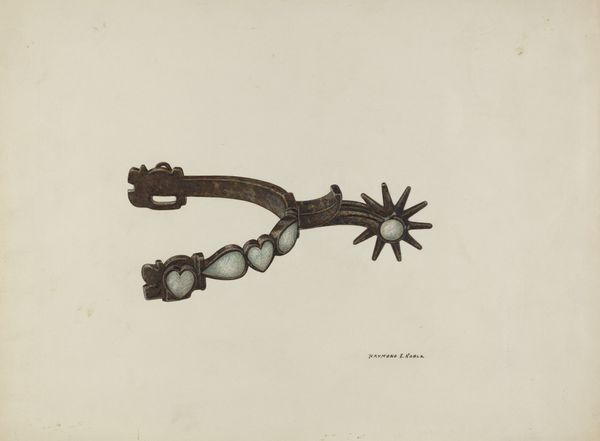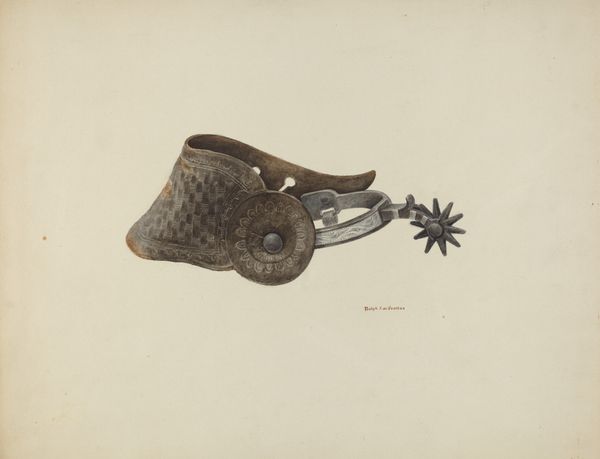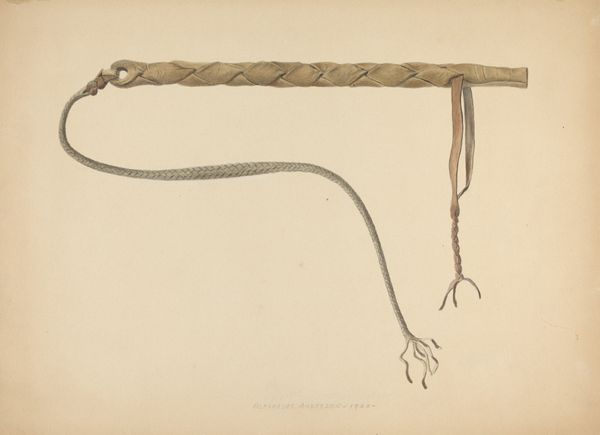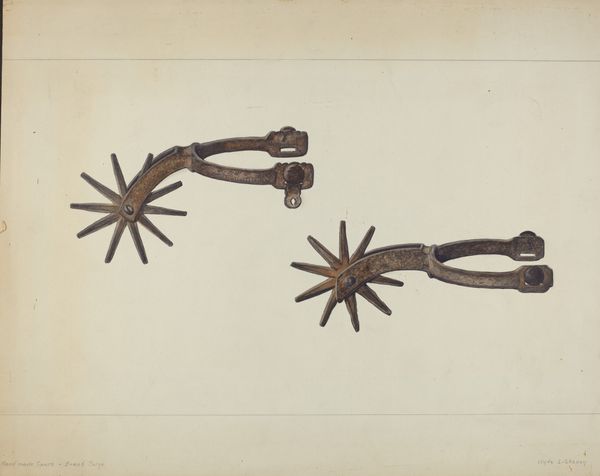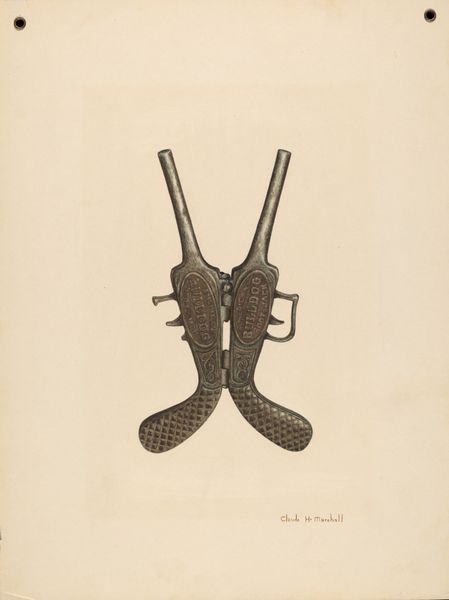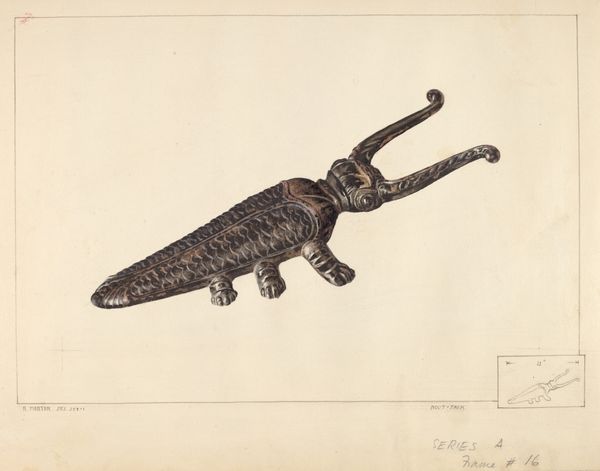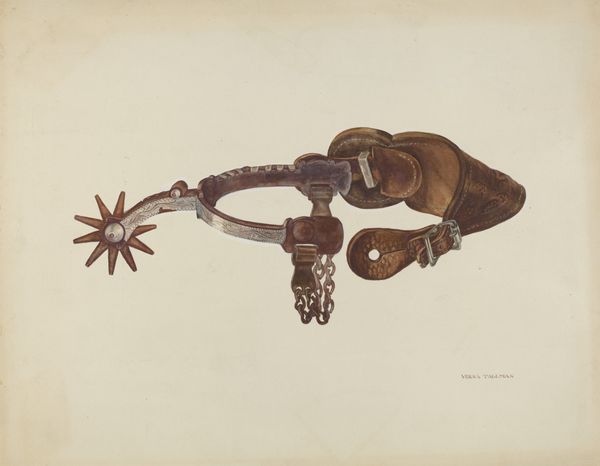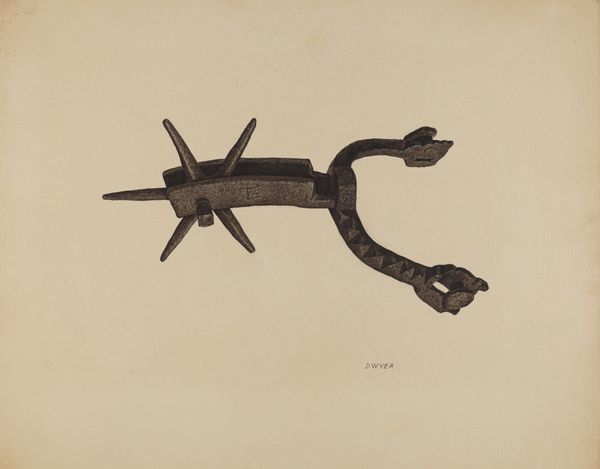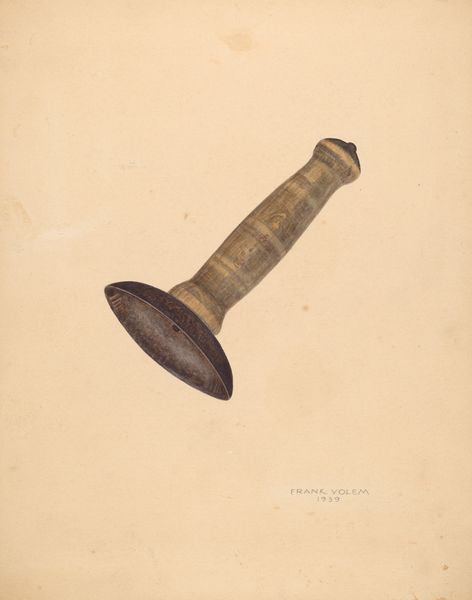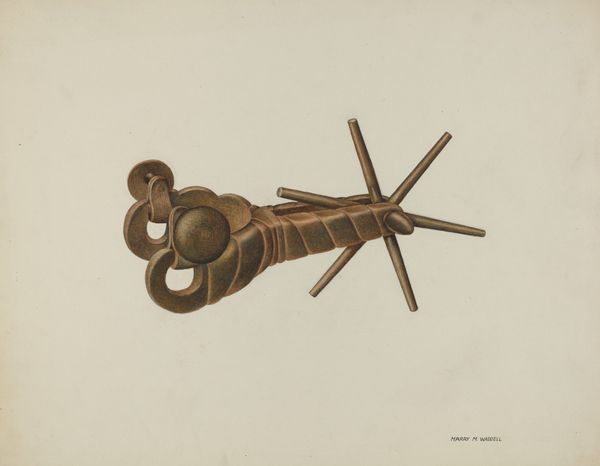
drawing, watercolor
#
drawing
#
watercolor
#
watercolour illustration
#
watercolor
Dimensions: overall: 27.6 x 24.5 cm (10 7/8 x 9 5/8 in.)
Copyright: National Gallery of Art: CC0 1.0
Curator: Before us we have "Spur," a watercolor and graphite drawing, dating to around 1936, by Harry Mann Waddell. Editor: The first impression is one of stark functionality, somehow stripped of context and floating in isolation. It feels almost surgical, precise, yet hinting at something more forceful, like pent-up aggression. Curator: Well, its starkness reflects the broader social climate of its time. This work emerged from the Index of American Design, a New Deal project created to document American decorative arts and folk art during the Great Depression. The project emphasized accurate visual records, which helps explain its almost scientific quality. Editor: So, a conscious effort to remove subjectivity then? The visual weight of that spiked wheel... It suggests pain, control. The imagery of the spur has always evoked power, hasn't it? Consider the language we use even today-- spurred into action. Curator: Indeed, and the project hoped to preserve a national identity and common heritage amidst economic turmoil. Waddell, alongside other artists, captured everyday objects like this to remind people of ingenuity and craft rooted in local culture. This wasn't simply about documentation, it was about celebrating American innovation when global capitalism faltered. Editor: So it functions as a tool, of both power and national consolidation, represented plainly on the page. Still, in this composition, the negative space feels deliberate. Does the bare backdrop amplify a sense of displacement in this object? Curator: It could, though perhaps it emphasizes its singular nature. By presenting the spur without any trappings, context, or setting, its form alone gains prominence. Each part can be appreciated independently, maybe prompting thoughts about labor, local crafts and traditions, all relevant to Waddell’s initial context. Editor: I agree that is plausible. But let’s admit the form alone holds something compelling. Seeing this symbol, meticulously drawn in watercolor, I'm reminded that symbols can be tools too; shaping identity, reinforcing history, or subtly provoking viewers towards less comfortable meanings as well. Curator: Perhaps, in revisiting Waddell’s work, we too are “spurred” to new insights about a fraught time. Editor: Precisely. Art's power endures in asking those questions.
Comments
No comments
Be the first to comment and join the conversation on the ultimate creative platform.
